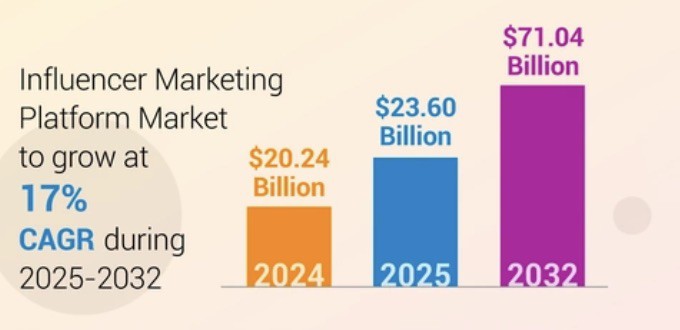
With over 1.49 billion users worldwide and around 1.3 billion photos being uploaded per day, it’s clear that Instagram is one of the most highly engaged social media networks in existence. Brands have, of course, been using this to the best of their advantage, with studies showing that they are spending over one billion a year on influencers. The Instagram influencer market will continue to grow at a substantial rate throughout the next couple of years, but is it all as positive as it looks? Should your brand be using this marketing method?

We’ve analysed some of the pros and cons of using influencer marketing, a perfect list to get brands started on considering their involvement in this trend-led tactic:
Pros
Access to a large audience
Usually, it will take a reasonable amount of time for brands to find their audience and market to thousands of individuals, but with influencer marketing, all they have to worry about is finding one suitable person with a captive audience. Once they’ve secured this individual, they have immediate access to thousands of their followers. The number of followers a person has is the key benefit of influencer marketing. However, it’s important that the right influencer is chosen to represent your brand, not least because they will be seen by thousands of people, which could influence the opinion they have of you as a brand.
Less intrusive
Instagram posts look a lot less like advertising, making potential customers less likely to scroll past. Brands tend to pay influencers to post a picture of themselves with the product or wearing it, which, of course, serves as a powerful endorsement because of the implicit trust of the audience in their chosen influencer, not to mention the more discrete product inclusions on social feeds. However, sometimes brands can fall victim to copy and paste when influencers forget to remove the copy, showing their followers that the post is staged. Here’s a famous example of when TV personality Scott Disick accidentally published a sponsored post that included all the instructions from the brand:

Cons
Fake followers
Unfortunately for brands, nowadays it’s so easy to be able to purchase followers and likes for a small sum of money. This makes it hard for brands to differentiate between those with genuine engagement and those with fake. However, new tools have been created that help to detect whose statistics are real, and Instagram is clamping down. One easy way for you as a brand to determine if someone’s followers are real is to check their engagement. Most fake accounts will be obvious due to the likes and followers not adding up. For example, someone may have 20K followers but is getting under 1000 likes on each post.
Personal scandals
Unfortunately, with high-profile influencers, there’s always a risk of them getting caught in scandals. Recently, the public exposure of old tweets has become popular, with many celebrities/influencers being caught out for tweeting inappropriate things years ago. This could have a negative impact on your brand, because followers will not appreciate you supporting someone who has been involved in less than savoury behaviour. It’s something worth researching when aligning your brand with a new face, especially if your brand or your consumer’s core values are well-defined and easy to search.
Ultimately, by using the right influencers to market your brand, you can increase your brand awareness and drive traffic to your website. When your research is done ahead of time, the rewards outweigh the risks for many. What do you think?
Looking to build on your influencer marketing? Get in touch with our experts today.

